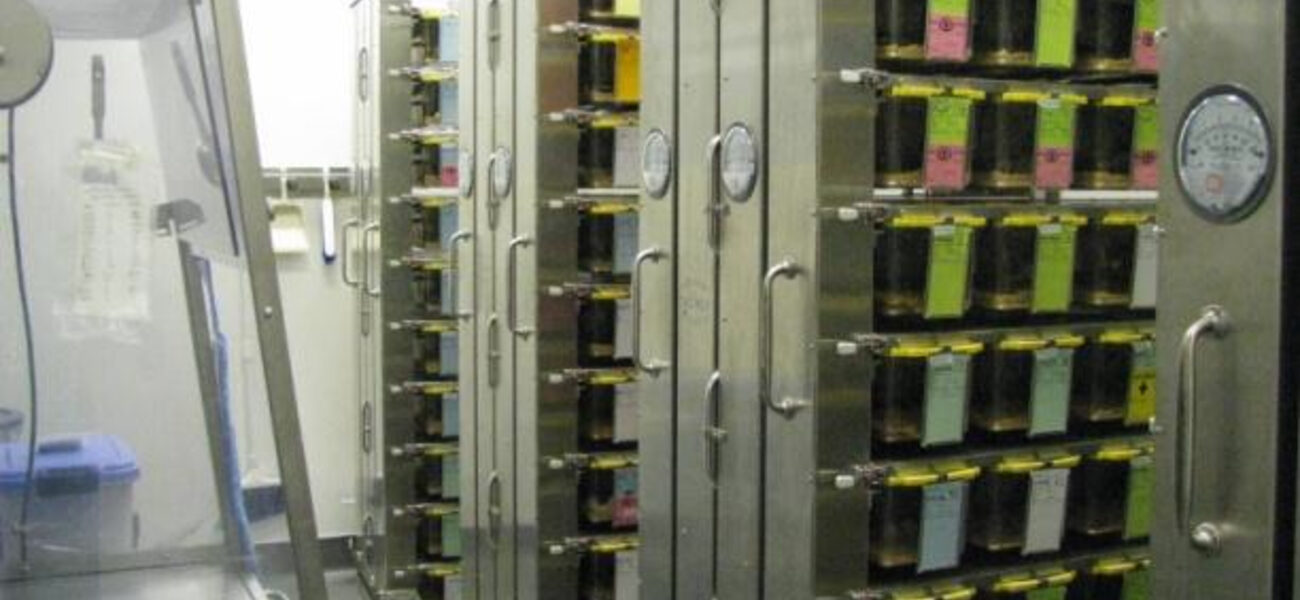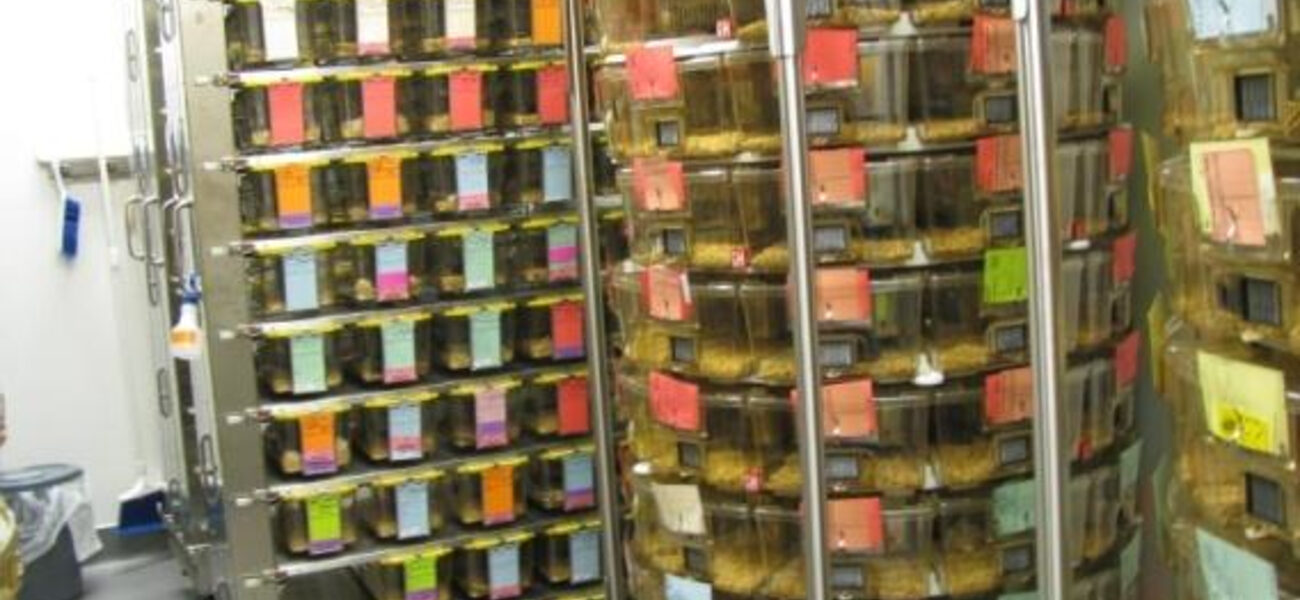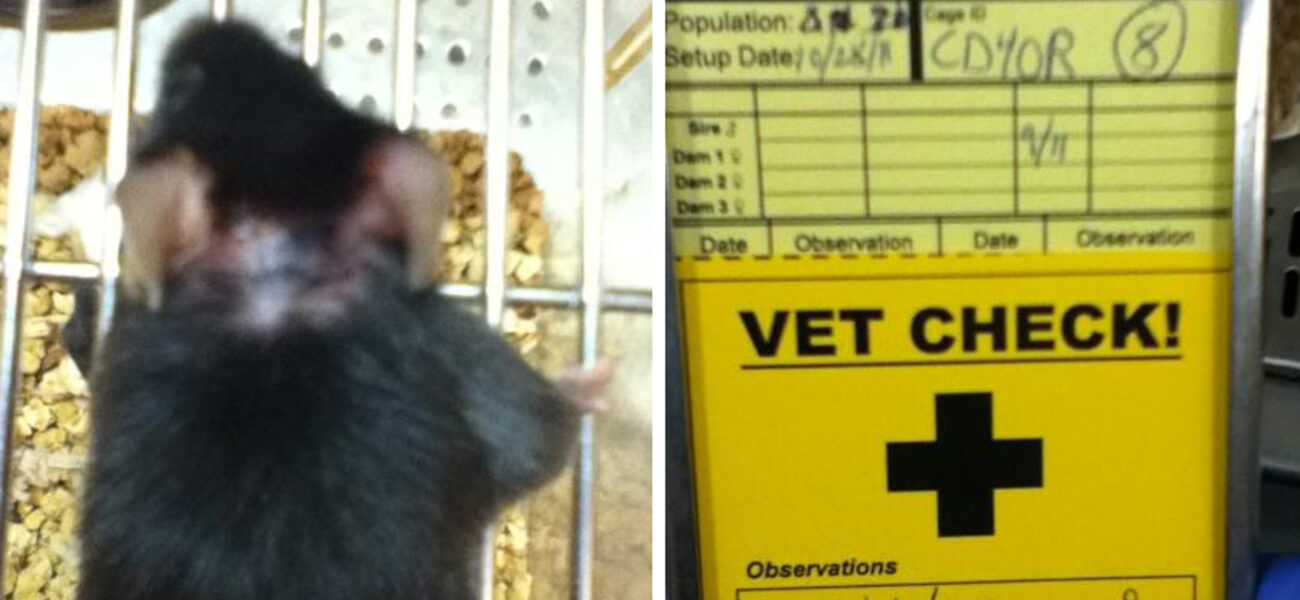What began as an effort to increase the mouse cage density in the vivarium at the Seattle Children’s Research Institute (SCRI) has evolved into an opportunity to improve efficiency and animal care by using Lean principles. Getting to that point revealed interesting data on how often it is necessary to change mouse cages.
The need to expand the housing capacity within the limited confines of the SCRI’s vivarium without constructing a new facility was prompted by two factors: A new researcher brought about 800 mouse cages with him when he began working there in December 2012, and the SCRI is continuing to recruit additional researchers.
The Office of Animal Care (OAC) operates a 16,000-sf vivarium and cares primarily for mice, along with some rats, guinea pigs, swine, frogs, and zebrafish. The facility includes 13 standard rodent housing rooms, as well as procedure rooms, special purpose rooms, and cagewash and autoclave areas. The OAC follows approximately 65 Institutional Animal Care and Use Committee protocols requiring sufficient housing, proper animal care, efficient operating procedures, and optimal use of employees’ time. The office is staffed by Ida Washington, who serves as the director and attending veterinarian; seven animal technicians; two animal care coordinators, and two veterinary technicians.
Maximizing Space Utilization
The OAC focused on five existing rooms at the end of the barrier hallway. Each contained a change station and four Thoren® racks of 120 cages each, for a total of 480. The five rooms housed a total of 2,400 cages.
By replacing the Thoren racks with OptiMICE® racks, the OAC was able to add 960 cages, increasing capacity to 3,360. The four Thoren racks in the first room were replaced with eight OptiMICE racks, each of which houses 100 cages, for a total of 800 cages. In the next four rooms, two of the Thoren racks were retained and the other two were replaced with four OptiMICE racks, giving each room a total of 640 cages. The combination of older and newer racks helped researchers ease into the change.
“I met with researchers beforehand, described the new racks, and gave them the option of using them or not,” says Washington. “Once they realized their mice were fine in the new cages, they were comfortable with the change. We are currently in the process of replacing all of the older racks in those rooms with the new high-density racks.”
Washington notes that one future possibility to further increase capacity is to replace all of the older racks with OptiMICE racks, enabling each of the 13 available housing rooms to accommodate 800 cages. That would give the OAC space for 10,400 cages, an increase of 66 percent compared to the 6,240 cages previously housed in the 13 rooms for a net gain of 4,160.
Costs and Challenges
Increased cage density meant increasing costs and new challenges. An extra change station had to be added to each of the five rooms to accommodate the additional cages. The existing automatic watering system pipes around each room had to be extended and dropped to the new cages and racks. New exhaust ports for the HVAC system were needed, as well. An additional animal technician was also necessary. All of this amounted to approximately $200,000 per room.
“I met with the president of the SCRI and his cabinet and convinced them that the cost of increasing the housing density within our existing rooms would be less expensive and more expedient than building new housing space,” says Washington. “The benefits are striking in that we calculated the square feet that the Thoren racks took up and the square feet that the OptiMICE racks took up, and it was an increase of 16 percent. However, when you view that as a percentage of the overall room area, it is an increase of only 5.6 percent. Balance that with an increase of 66 percent in cages, and we came out ahead.”
There also were challenges pertaining to room configuration. The new racks are cylindrical with pie-shaped cages and have distinct exhaust characteristics. Considerable advance planning was necessary with the Institute’s building and engineering personnel to establish the appropriate number of new racks per room and to reconfigure exhaust ports and airflow to accommodate them.
“It took awhile for the husbandry staff to establish optimal methods of transporting the new cages on rectangular carts and making sure the cagewash and bedding dispenser functioned appropriately with the new cages,” recalls Washington.
Performance-based Approach to Cage Changing
Although the OAC increased the number of cages, the number of staff members was not immediately increased. As a result, Washington was interested in increasing efficiency and labor savings while following the protocols and preserving animal welfare.
Prior to increasing the housing capacity, the OAC changed cages on a calendar-based system that varied depending on how many mice were in each cage. For example, cages that contained one to two mice were changed every two weeks. Cages with three to five mice—65 to 75 percent, on average—were changed every week.
“We set about looking for an appropriate performance-based approach to cage changing and settled on testing ammonia in the cages,” says Washington. “We did a study where we measured the level of ammonia in the cages that housed five mice. We hung colorimetric ammonia indicators in the cages and tested them one to 14 days after the last cage change.”
A cage change criterion of 25 ppm ammonia was used to determine when the staff needed to change the cages. Male mice reached the criterion in nine to 10 days, whereas females did not reach the level until approximately 15 days. According to this performance-based measure, OAC staff members were over-changing the cages.
In order to help technicians readily identify when cages needed to be changed, urine spot characteristics were correlated with ammonia levels. The technicians can detect low, medium, high, and dangerous ammonia levels based on how diffuse and dark the urine spots are. The animal care staff was skeptical at first about altering their schedule of cage changing, but they accepted the new standards after seeing data showing they would be changing cages less often with this method.
Approximately 33 percent of the cages are now cleaned weekly, reducing the cage changes by 35 percent per week. The amount of time spent in dirty cage washing has dropped by 1½ hours per day. Annual bedding costs have decreased by about 50 percent. There is also a savings relative to wear and tear on the machinery and cages.
The new cages decrease the technicians’ workload per cage, but this is counterbalanced by a larger number of mice per room. The increased capacity has allowed some researchers to expand their mice colony size, which, in turn, has enabled Washington to justify hiring additional animal technicians.
Adopting Lean Management Principles
The increase in cage density and the new cage-changing procedures were accompanied by a desire to increase efficiency and improve animal care. To that end, the OAC adopted Lean management principles that use continuous performance improvement (CPI) as a way of doing business.
In particular, a CPI technique called the A3 approach was adopted as a problem-solving tool to improve the handling of clinical cases. The term “A3” refers to a size of paper, which is divided in half with the left side used to define a facility’s current state and the problem it is trying to solve with a root cause analysis section to determine why the problem exists. On the right side, the goals and optimal future state are listed, along with steps to take to attain it. The SCRI has used the A3 method to improve daily operations in all facets of clinical and research support.
When Washington joined the SCRI in 2011, she quickly realized that clinical cases were handled in a cumbersome way that delayed veterinarian involvement. Technicians clipped a vet-check card on the cage of a sick animal, a veterinary technician eventually looked at the sick animal and communicated with the principal investigator. Late in the day, Washington was notified.
Electronic media solved the problem. All technicians now carry an Apple iPad Touch. When they see a sick animal, they send a picture to the veterinary technician who emails Washington a description of the animal in vet-tech terms. Washington, who set a goal of seeing or hearing about the cases within two hours of when a technician first sees them, can often diagnose and treat the animal based on the photo.
In September 2011, Washington did not see any of the cases needing veterinary attention within two hours. An audit showed that after the new procedure was implemented, she was seeing 82 percent of these cases within two hours by February and March of 2012, and the number climbed to 91 percent in May and June that year.
“The animal care staff enjoys using the electronic media and we have great compliance,” she says. “It is a system that is working quite well.”
The OAC also uses work in progress (WIP) boards to engage the staff by making daily tasks visible and encouraging staff to share the workload. The board lists tasks that must be done and provides color-coded dots to show when a job has been completed. For example, the OAC counts the number of cages being washed each day, the number of cages in use, the number in storage, and those in the cagewash and autoclave facilities. It was determined that extra cages were stockpiling in the sterile storage area. The goal was to use a pull system that limited the number of cages in use at a given time to the number that is actually needed.
OAC staff members huddle at the WIP board every day at 11 a.m. With the Lean management principles, most health checks are now completed by 11 a.m. The daily tasks are visible; staff members are accountable; staff overtime has decreased; the division of labor is balanced; and the cage inventory is counted.
The Lean principles also include the creation of standard work documents to improve efficiency in the dirty cagewash facility. A spaghetti diagram tracks the steps taken in certain tasks within the OAC. In the dirty cagewash, a technician walked two-tenths of a mile in one session. Therefore, staff is being observed to define interruptions, waste, and ways to get rid of inefficiencies. A standard work document will be created to outline the necessary work process steps.
By Tracy Carbasho
This report is based on a presentation given by Washington at Tradeline’s Animal Research Facilities conference.
| Organization | Project Role |
|---|---|
|
Thoren Caging Systems
|
Cage Rack System Supplier
|
|
OptiMICE
|
Cage Rack System Supplier
|


